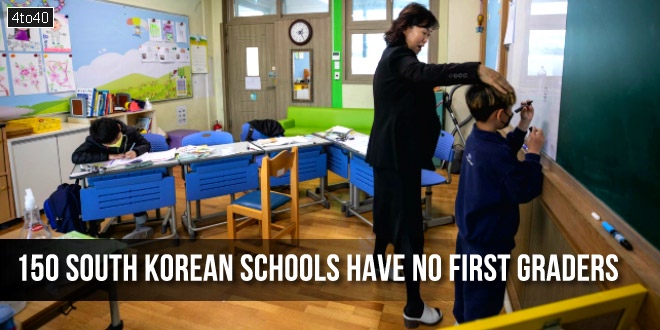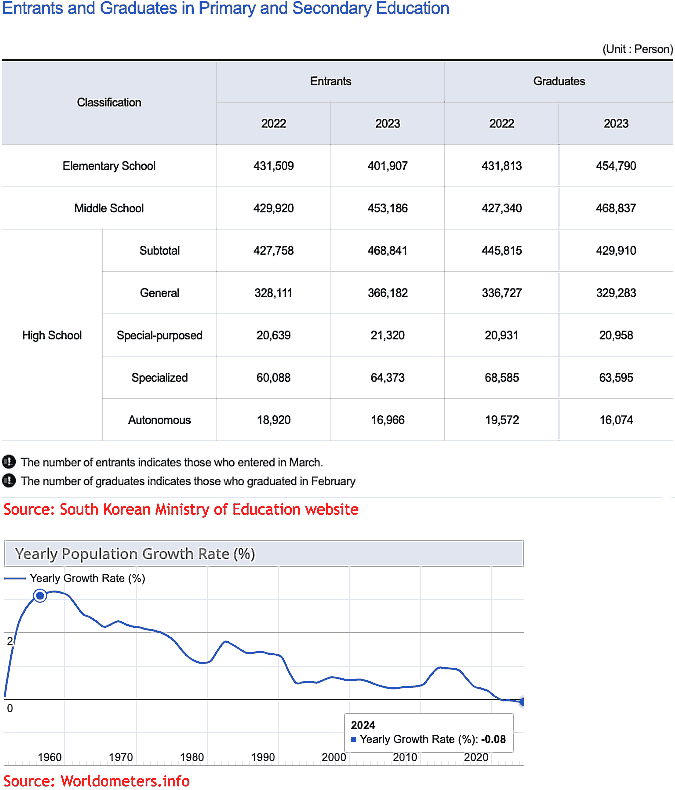Massive population decline in South Korea: Play Schools have no first graders to enrol
Last month, it was reported that a South Korean construction company Booyoung Group had proposed to $75,000 (roughly 62.28 lakh in Indian rupees) to its employees each time they have a kid to combat the country’s low birth rate.
150 South Korean Schools have no first graders to enrol
In February this year, the Ministry of Education in South Korea said that 157 elementary schools across the country do not have any first graders to enrol in the month of March. This comes as a record-low number of new students have enrolled in schools in South Korea as this school year started.
Except for Seoul, Gwangju, Daejeon, Ulsan, and Sejong, the ministry said that almost every province and metropolitan district in South Korea had at least one elementary school that was not expecting new students. North Jeolla Province led all regions with 34 schools with no new students enrolling.
The ministry stated that 369,325 children have been confirmed to enrol in primary school when the school year begins in March, accounting for 99.9 per cent of the 369,441 children scheduled to begin state-mandated education this year. This figure is lower than the government’s January estimate of 396,533.
It will be the lowest number of new first graders since the government began keeping track in 1970, and the first time the total has fallen below 400,000. Last year, 401,907 new students were admitted to primary school.
According to a report published by The Korea Herald in February of this year, the number of new children starting school was largely expected to fall this year, as just 357,771 babies were born in 2017 — when the majority of this year’s first graders were born. It represented a significant decrease from the 406,243 births the previous year.
Notably, South Korea is witnessing a sharp population decline over the last few years. The country’s yearly population growth in 2024 is projected to be 0.08%, as per Worldometer data. Notably, the population of South Korea as of April 2024 is 51,752,215.
South Korea’s fertility rate, which was already the lowest in the world, continued to plummet in 2023. This, according to reports came as women concerned about their career advancement and the financial expense of rearing children opted to delay childbirth or decided not to have kids. In addition to childcare concerns, housing, employment, and education costs-related challenges have also contributed to this decline.
The average number of expected babies for a South Korean woman during her reproductive life dropped to a historic low of 0.72 from 0.78 in 2022, according to Statistics Korea.
The situation is such that the South Korean government has taken several measures to boost the country’s population including childcare subsidies. Multiple media reports say that the South Korean government since 2006 have spent over $247 billion to boost the country’s population, however, these measures have not yielded any significantly positive results as desired.
Last month, it was reported that a South Korean construction company Booyoung Group had proposed to pay $75,000 (roughly 62.28 lakh in Indian rupees) to its employees each time they have a kid to combat the country’s low birth rate. As per the report, Joong-keun further said that employees with three newborns will be given the option of getting $225,000 (₹ 1,86,78,318) in cash or rental housing if the government supplies land for the building.
 Kids Portal For Parents India Kids Network
Kids Portal For Parents India Kids Network








